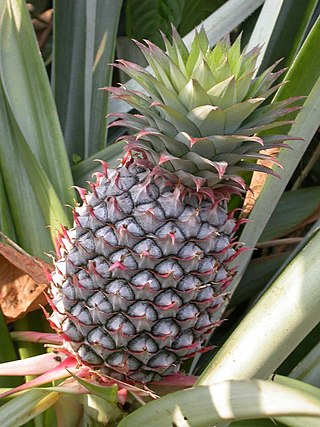
The Bromeliaceae are a family of monocot flowering plants of about 80 genera and 3700 known species, native mainly to the tropical Americas, with several species found in the American subtropics and one in tropical west Africa, Pitcairnia feliciana.
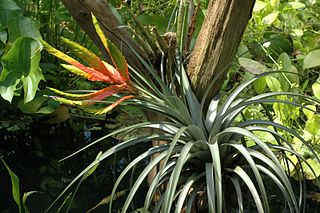
Tillandsioideae is a subfamily of plants in the bromeliad family Bromeliaceae. This subfamily contains the greatest number of species. Most are epiphytic or lithophytic, growing in trees or on rocks where they absorb water and nutrients from the air. Spanish moss of the genus Tillandsia is a well-known species. Bromeliads in the genera Guzmania and Vriesea are the more commonly cultivated members of this subfamily.
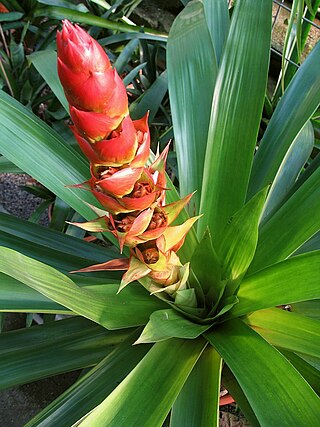
Mezobromelia is a genus of the botanical family Bromeliaceae, subfamily Tillandsioideae. The genus name is for Carl Christian Mez, German botanist (1866-1944). Some authorities treat Mezobromelia as a synonym of Cipuropsis.
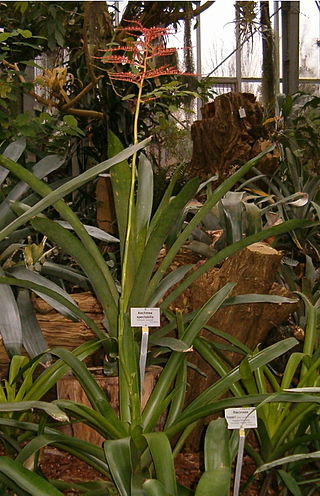
Racinaea is a genus of the flowering plants in the family Bromeliaceae, subfamily Tillandsioideae. The genus is named for Racine Foster, wife of Mulford B. Foster and co-founder of the BSI.
Gregbrownia fulgens, synonym Mezobromelia fulgens, is a species of flowering plant in the family Bromeliaceae. It is endemic to Ecuador. It grows in the páramo and high-elevation forest of the Andes. It is terrestrial or grows as an epiphyte.
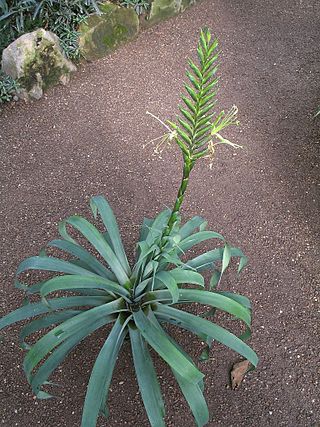
Pseudalcantarea viridiflora is a species of flowering plant in the family Bromeliaceae, native to Mexico and Central America. It was first described by Johann Georg Beer in 1856.
Josemania truncata is a species of flowering plant in the family Bromeliaceae, native to Colombia and Ecuador. It was first described by Lyman Bradford Smith in 1954 as Tillandsia truncata. Plants of the World Online sinks the genus Josemania into Cipuropsis, treating this species as Cipuropsis truncata.
Josemania asplundii, synonym Tillandsia asplundii, is a species in the genus Josemania, native to Ecuador and Peru. It was first acquired by the 1842 United States Expedition in South America.
Josemania singularis, synonym Cipuropsis singularis, is a species of flowering plant in the family Bromeliaceae. This species is native to Costa Rica and Panama.
Cipuropsis is a genus of flowering plant in the family Bromeliaceae, native to the Caribbean, southern Central America and northwestern South America. The genus was first described by Ule in 1907.
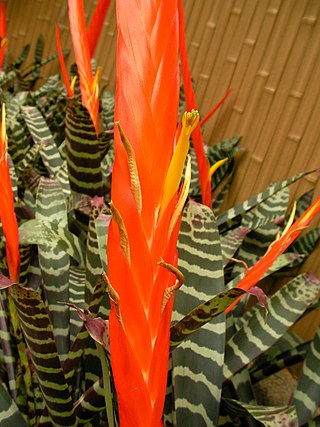
Lutheria is a genus of plants in the family Bromeliaceae.

Goudaea is a genus of flowering plants belonging to the family Bromeliaceae.
Gregbrownia is a genus of flowering plants belonging to the family Bromeliaceae.

Lemeltonia is a genus of flowering plants belonging to the family Bromeliaceae.

Tillandsia subg. Tillandsia is a subgenus of the genus Tillandsia.

Tillandsia subg. Aerobia is a subgenus of the genus Tillandsia.
Josemania is a genus of flowering plant in the family Bromeliaceae, first described in 2016.
Josemania delicatula, synonym Cipuropsis delicatula, is a species in the family Bromeliaceae, native to Colombia.
Josemania pinnata, synonym Cipuropsis pinnata, is a species in the family Bromeliaceae, native to Panama, Colombia and Ecuador.









